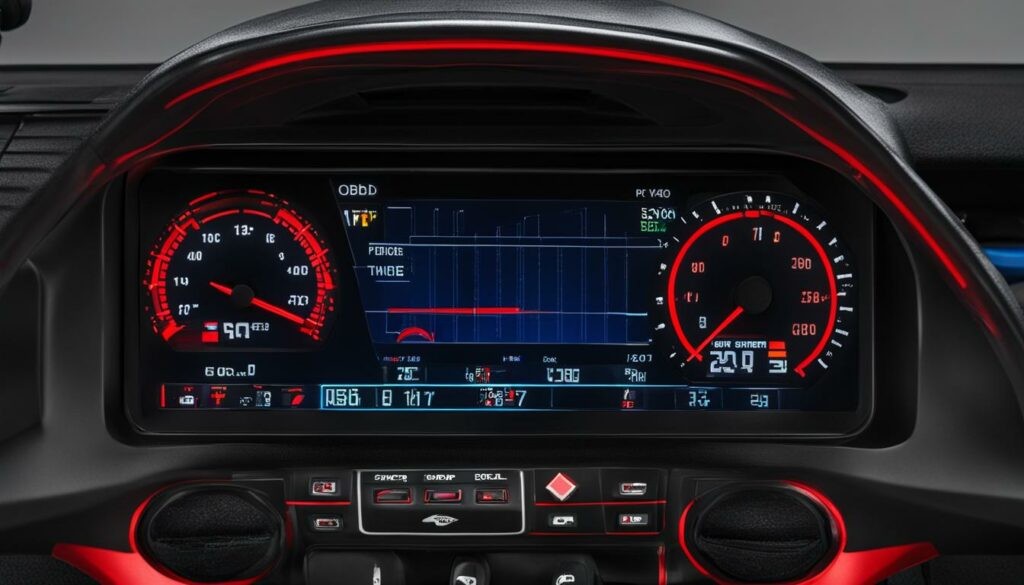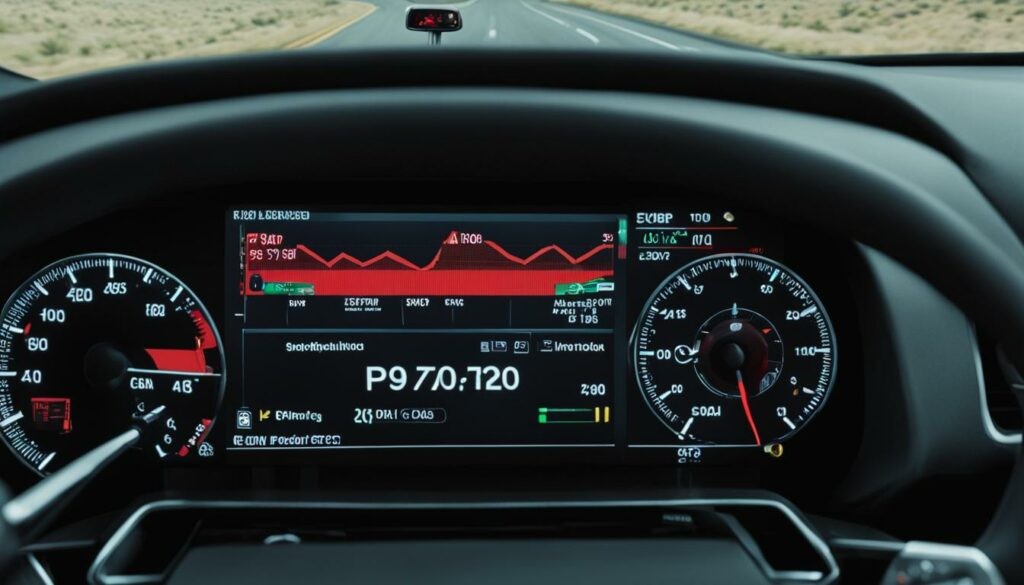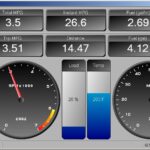The P0706 trouble code is a diagnostic trouble code (DTC) that can surface in vehicles equipped with automatic transmissions. It signals an issue within the transmission range sensor circuit, a critical component responsible for relaying the gear selector lever’s position to your car’s computer, the Engine Control Module (ECM). Accurate communication from the transmission range sensor is vital for smooth gear changes and optimal vehicle performance. When this sensor malfunctions or provides inconsistent data, the P0706 code is activated, alerting you to a potential problem.
This comprehensive guide will delve into the intricacies of the P0706 code, exploring its underlying causes, recognizable symptoms, effective diagnostic procedures, and reliable repair solutions. By gaining a thorough understanding of these aspects related to the transmission range sensor, you’ll be better prepared to tackle this issue head-on and maintain your vehicle’s smooth operation.
Before we dive deeper, let’s clarify the crucial role of the transmission range sensor and its function within the transmission system:
Key Insights into the P0706 Code:
- The P0706 code specifically points to a problem within the transmission range sensor circuit.
- The transmission range sensor, also known as a park/neutral position switch, accurately detects the gear selector’s position.
- Inaccurate or intermittent signals from the sensor are the root cause of the P0706 code.
- Common symptoms include erratic shifting, reduced acceleration, and potential entry into limp mode.
- Professional diagnosis by a skilled mechanic is essential for pinpointing the exact cause and ensuring effective repair.
Unpacking the Common Causes of the P0706 Code
When your vehicle throws a P0706 code, it’s crucial to understand the potential culprits behind this fault. Several factors can contribute to issues with the transmission range sensor circuit, leading to the activation of this code. Here’s a breakdown of the most common causes:
- Contaminated or Degraded Transmission Fluid: Old, dirty, or low-quality transmission fluid can impede the smooth operation of various transmission components, including the transmission range sensor.
- Faulty Park/Neutral Position Switch (Transmission Range Sensor): The transmission range sensor itself can become damaged, worn out, or defective over time, leading to inaccurate readings.
- Misadjusted Park/Neutral Position Switch: If the transmission range sensor is not correctly aligned or adjusted, it may fail to accurately detect the gear selector position.
- Damaged or Degraded Wiring to the Transmission Range Sensor: The wiring connecting the transmission range sensor to the ECM can suffer damage, such as corrosion, breaks, or shorts, disrupting signal transmission.
- Malfunctioning Valve Body: The valve body within the transmission controls fluid flow. A damaged or defective valve body can indirectly affect the transmission range sensor’s operation.
- Faulty Manual Shift Valve Linkage: Issues with the manual shift valve linkage can prevent the transmission range sensor from correctly registering gear selections.
- Shorted or Open Park/Neutral Position Switch Harness: The wiring harness for the transmission range sensor can experience shorts or open circuits, interrupting electrical flow.
- Poor Electrical Connection to the Park/Neutral Position Switch Circuit: Loose, corroded, or damaged electrical connectors in the transmission range sensor circuit can cause intermittent or lost signals.
- Damaged or Defective Control Cable: The control cable that links the gear selector to the transmission can become damaged, affecting the sensor’s ability to read gear positions.
- ECM Issues (Rare): In rare instances, a fault within the ECM itself can misinterpret signals from a functioning transmission range sensor or falsely trigger the P0706 code.
A thorough examination of these potential causes is essential during the diagnostic process to effectively resolve the P0706 code.
Enhance Your Vehicle’s Performance with our tested tuning files for Adblue / EGR / DPF / Adblue off!
Register Now or Already have an account? Login now
Recognizing the Symptoms of a P0706 Code
The P0706 code manifests through a range of symptoms that can indicate problems within your vehicle’s transmission system. Recognizing these symptoms promptly is crucial for addressing the issue before it escalates. Here are the common warning signs associated with a P0706 code:
- Illuminated Check Engine Light (CEL): The most immediate and noticeable symptom is the activation of the Check Engine Light on your dashboard. This light serves as a general alert for various vehicle issues, including problems with the transmission range sensor circuit.
- Erratic or Rough Shifting: You might experience poor shifting characterized by harsh gear changes, delays in shifting, or the transmission struggling to find the correct gear. This can lead to an uncomfortable and jerky driving experience.
- Reduced Acceleration Performance: A P0706 code can result in decreased acceleration, making your vehicle feel sluggish and unresponsive, especially when trying to accelerate quickly or merge onto highways.
- Gear Selection Difficulties: The inability to switch gears smoothly can be another symptom. You may find it challenging to shift into specific gears, or the gear selector might feel stiff or resistant.
- Decline in Fuel Economy: A malfunctioning transmission range sensor can negatively impact transmission efficiency, leading to poor fuel efficiency and more frequent trips to the gas station.
- Activation of Limp Mode: In more severe cases, the vehicle may enter “limp” mode. Limp mode is a safety mechanism that limits engine power and restricts transmission operation to prevent further damage. While in limp mode, your vehicle’s speed and performance will be significantly reduced.
Encountering any of these symptoms should prompt you to seek professional diagnosis and repair. Ignoring these warning signs can lead to more extensive transmission damage and potentially costly repairs down the line.
“Promptly addressing the symptoms associated with the P0706 code is vital to prevent further complications and ensure the longevity of your vehicle’s transmission.”
Diagnosing the P0706 Code: A Mechanic’s Approach
Diagnosing a P0706 code accurately requires a systematic approach and the use of specialized tools. A qualified mechanic will follow a step-by-step process to pinpoint the root cause of the problem. Here’s a typical diagnostic procedure:
- Retrieving the Trouble Code with an OBD-II Scanner: The first step involves using an OBD-II scanner to extract the stored P0706 code from the vehicle’s computer system. This scanner provides valuable diagnostic data and confirms the presence of the fault code.
- Visual Inspection of the Range Sensor and Wiring: A visual inspection of the transmission range sensor and its associated wiring harness is crucial. The mechanic will look for any obvious signs of damage, such as frayed wires, corroded connectors, or physical damage to the sensor itself.
- Road Test for Performance Observation: A test drive allows the mechanic to observe the vehicle’s behavior under real-world driving conditions. They will assess transmission performance during acceleration, gear changes, and deceleration, noting any irregularities or symptoms related to the P0706 code. This test drive can provide valuable clues about the nature of the problem.
- Continuity and Resistance Testing of Circuits: The mechanic will use a multimeter to perform circuits continuity and resistance tests on the transmission range sensor circuit. These tests verify the electrical integrity of the wiring, sensor, and related components, identifying any open circuits, shorts, or excessive resistance that could be causing the P0706 code.
By meticulously following these diagnostic steps, a mechanic can effectively determine the underlying cause of the P0706 code and proceed with the necessary repairs.
Avoiding Common Diagnostic Pitfalls with the P0706 Code
When diagnosing a P0706 code, it’s essential to be aware of common mistakes that can lead to misdiagnosis and unnecessary repairs. Steering clear of these pitfalls ensures a more accurate and efficient diagnostic process. Two key errors to avoid are overlooking potential engine misfires or driveline problems and neglecting to check for other stored codes.
The Overlooked Engine Misfire Connection
One frequent mistake is failing to consider engine misfire as a potential contributing factor to a P0706 code. An engine misfire can create vibrations and erratic engine behavior that may be misinterpreted by the transmission system, potentially triggering a false P0706 code. Therefore, it’s crucial to rule out engine misfires by checking for related misfire codes and assessing engine performance before focusing solely on the transmission.
Driveline Issues: Expanding the Diagnostic Scope
Another common oversight is neglecting to evaluate driveline problems. Issues within the driveline, such as worn universal joints, imbalanced driveshafts, or differential problems, can create symptoms that mimic transmission range sensor faults. These driveline issues can introduce vibrations or resistance that affect transmission operation and potentially trigger a P0706 code. A comprehensive diagnosis should include inspecting driveline components to eliminate them as potential causes.
The Importance of Checking for Additional Stored Codes
The P0706 code might not be the only diagnostic trouble code present. Failing to check for other stored codes can lead to missing crucial clues. Related codes, such as P0705, P0707, P0708, and P0709, which are also related to the transmission range sensor circuit, can provide valuable context and narrow down the possible causes. Always perform a full system scan to identify all stored codes for a complete diagnostic picture.
| Common Diagnostic Mistake | Potential Consequence |
|---|---|
| Ignoring engine misfire | Misdiagnosis; unnecessary transmission range sensor replacement |
| Neglecting driveline problems | Misdiagnosis; overlooking the actual source of the issue |
| Not checking for other stored codes | Missing vital information; incomplete diagnosis |


By avoiding these common diagnostic mistakes and conducting a thorough and comprehensive assessment, mechanics can accurately pinpoint the true cause of the P0706 code, leading to effective and targeted repairs.
Understanding the Seriousness of the P0706 Code
The P0706 code is considered a potentially serious issue that should not be ignored. Its seriousness stems from its direct impact on vehicle operation and safety. When the P0706 code is triggered, it often indicates that the transmission may enter “limp mode.”
Limp mode is a protective mechanism designed to prevent further damage to the transmission when a fault is detected. While in limp mode, the transmission’s functionality is significantly limited. This can manifest in several ways that severely impact driving: reduced engine power, limited gear selection, and sluggish performance. These limitations can create unsafe driving conditions, particularly in situations requiring quick acceleration or maneuvering.
Ignoring a P0706 code and continuing to drive in limp mode can exacerbate the problem and potentially lead to more extensive and costly transmission damage. Prompt diagnosis and repair are crucial to restore normal vehicle operation and prevent further complications.
“Operating a vehicle with a P0706 code, especially in limp mode, compromises safety and can lead to more severe transmission problems if left unaddressed.”
Addressing the P0706 code promptly ensures that your transmission operates as intended, providing smooth gear changes, proper acceleration, and reliable power delivery. This, in turn, maintains the overall safety and dependability of your vehicle.
Here’s a table summarizing the serious implications of the P0706 code on vehicle operation:
| Symptom Associated with P0706 | Impact on Vehicle Operation |
|---|---|
| Erratic Shifting | Compromises smooth gear changes; potential for jerky and unsafe driving |
| Reduced Acceleration | Limits vehicle responsiveness and ability to accelerate quickly |
| Inability to Select Gears | Restricts vehicle maneuverability; may become stuck in a single gear |
| Poor Fuel Economy | Increases fuel consumption due to inefficient transmission operation |
| Limp Mode Activation | Severely restricts power and performance, prioritizing transmission protection over drivability |
Given the potential safety risks and operational limitations associated with the P0706 code, immediate attention and professional repair are highly recommended.
Effective Repairs for Resolving the P0706 Code
Addressing a P0706 code requires targeted repairs based on the underlying cause identified during the diagnostic process. Several potential repairs can effectively resolve this issue. These include:
- Transmission Fluid Flush and Replacement: If contaminated or degraded transmission fluid is the culprit, a complete fluid flush and replacement with high-quality fluid can resolve the issue.
- Repairing or Replacing Damaged Wiring or Connectors: Addressing any damage to the wiring or connectors in the transmission range sensor circuit, such as repairing broken wires or replacing corroded connectors, is essential for restoring proper signal transmission.
- Battery Voltage Level Check and Correction: Ensuring proper battery voltage levels is important for the correct operation of all vehicle electronics, including the transmission range sensor circuit. Addressing any battery voltage issues can sometimes resolve a P0706 code.
- Circuit and Connector Repair or Replacement: If diagnostic testing reveals damaged or defective circuits or connectors beyond the wiring harness, repairing or replacing these components is necessary.
- Transmission Range Sensor Replacement: If the transmission range sensor itself is found to be faulty or defective, replacing it with a new, properly calibrated sensor is the most direct solution.
- ECM Replacement (Rare Cases): In rare cases where the ECM is diagnosed as the source of the problem, ECM replacement may be necessary. However, this is typically a last resort after ruling out all other potential causes.
After completing the necessary repairs, it’s crucial to clear all stored trouble codes using a scan tool. A subsequent test drive and rescanning for codes are essential to verify that the P0706 code has been successfully resolved and does not reappear.
Conclusion: Addressing the P0706 Code for Optimal Transmission Health
In summary, the P0706 code signals a malfunction within the transmission range sensor circuit, a critical component for accurate gear selection in automatic transmissions. Prompt action is vital to prevent further transmission complications and ensure your vehicle operates at its best.
Seeking professional diagnosis from a qualified mechanic is the most effective step in addressing a P0706 code. A thorough evaluation will pinpoint the root cause, allowing for targeted and effective repairs.
Proactive vehicle maintenance plays a significant role in preventing issues like the P0706 code. Regularly checking your transmission fluid condition and addressing any warning lights or unusual symptoms can help detect potential problems early and minimize the risk of transmission-related failures.
Remember, consistent vehicle maintenance is key to a smooth and reliable driving experience and extends the lifespan of your transmission. By prioritizing maintenance and promptly addressing diagnostic codes like P0706, you can enjoy trouble-free driving for years to come.
Frequently Asked Questions about the P0706 Code
What are the primary causes of the P0706 code?
The P0706 code can arise from various factors, including contaminated transmission fluid, a defective transmission range sensor (park/neutral position switch), a misadjusted sensor, damaged wiring to the sensor, a faulty valve body, manual shift valve linkage issues, a shorted or open sensor harness, poor electrical connections, a damaged control cable, or, in rare cases, a faulty ECM.
What are the most common symptoms associated with the P0706 code?
Common symptoms include the Check Engine Light illuminating, poor shifting performance, decreased acceleration, inability to switch gears, reduced fuel efficiency, and the vehicle potentially entering “limp mode,” which restricts power and performance.
How does a mechanic typically diagnose the P0706 code?
Mechanics diagnose the P0706 code using an OBD-II scanner to read the code. They then perform a visual inspection of the transmission range sensor and wiring harness. A test drive helps assess symptoms, followed by circuits continuity and resistance testing to pinpoint electrical faults.
What are common diagnostic errors to avoid when dealing with a P0706 code?
Common errors include overlooking engine misfires or driveline problems as potential root causes and neglecting to check for other stored codes that could provide valuable diagnostic clues. A comprehensive approach is crucial for accurate diagnosis.
How serious is the P0706 code for my vehicle?
The P0706 code is considered potentially serious because it can lead to “limp mode,” significantly reducing power and performance. It can also cause poor shifting, decreased acceleration, and other drivability issues, impacting safety. Prompt repair is recommended.
What types of repairs can fix the P0706 code and resolve the problem?
Repairs can range from flushing and replacing dirty transmission fluid, repairing or replacing damaged wiring or connectors, checking battery voltage, repairing circuits, replacing the transmission range sensor, or, in rare cases, replacing the ECM. Post-repair, code clearing and testing are essential.
In conclusion, what is the key takeaway regarding the P0706 code?
The P0706 code indicates a problem within the transmission range sensor circuit. Timely diagnosis and repair by a qualified mechanic are crucial to prevent further transmission damage and maintain vehicle safety and performance. Regular vehicle maintenance, including transmission fluid checks, is essential for prevention.
Enhance Your Vehicle’s Performance with our tested tuning files for Adblue / EGR / DPF / Adblue off!
Register Now or Already have an account? Login now

